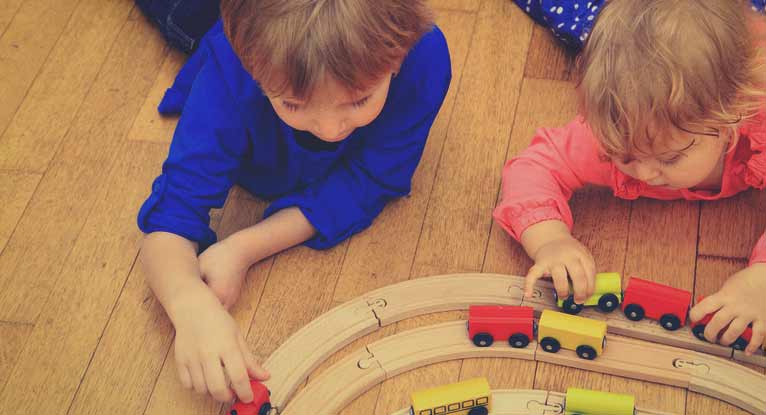
In time, parallel play will boost her social skills and lead to your child interacting more directly with other children. In the beginning, limit these playmates to two or three children at a timeīe sure to monitor the activities so fights don’t break out over toys Give your child opportunities to play with other children Here’s how you can help your toddler with parallel play: How Can You Help Your Toddler With Parallel Play? All of these types of play are important for her development. Parallel play is an important part of your child’s development because it helps her learn about relationships and how to behave around others.Īs your child matures, you’ll see her playing more collaboratively, as well as using her imagination in more active ways. This could lead to conflict, which you’ll need to help resolve, perhaps by offering your child another toy to play with instead.Įven though it may seem odd to see your child playing independently next to a child instead of together with that child, it doesn’t mean that something is wrong. For example, if there is only one truck and your toddler sees his playmate playing with it, he may decide to try to take it for himself. Keep in mind that sharing isn’t a concept that’s understood yet. If the playmate is playing with blocks, your toddler may decide to play with blocks, too. An example of parallel play may be your child imitating what a playmate is doing while not seeming to interact with him directly. What Is an Example of Parallel Play?ĭuring toddlerhood, imitation and pretend games are common. This type of play may begin between the ages of 18 months and 2 years. They will sometimes be observing and even mimicking the other child. Parallel play is when two or more toddlers play near one another or next to one another, but without interacting directly. Learn more about what parallel play is and what makes parallel play unique. What toddlers tend to do is play in parallel - not directly with each other. When your toddler has a playdate or encounters other kids at the playground, you might notice that toddlers interact a little differently than older children. We consider how life is for them while they're still learning to play with others.Play is an important part of your child’s healthy development, and one of the chief ways your little one learns. Six things children need – Te hanga ao tōtika, ao haumaru – structured and secure world How could your child spend time with other children – at home or at playgroups, at Kōhanga Reo or ECE?īaby wall frieze – Ka taea e au ki te mātakitaki – I can watch so don’t be surprised when I copy what I see other children do or say.What sorts of games or activities do you think would suit them at this stage, where they like to watch and copy others but have difficulty sharing?.What activities are they most interested in lately?.In contrast, turn taking means their ‘turn’ is likely to come back around again. Sometimes it’s easier to talk about having a turn rather than sharing, because sharing sometimes means ‘giving something away’ (like half my banana), which won’t come back.

Take notice when they do share and praise them for it. If there are three kids and one bike - what strategies could you use to keep the peace?ĭon’t expect them to share easily, but keep encouraging them to do so.Walking or riding bikes to the park is a great way to use up all that energy.’ On page 6 of the Whakatipu booklet 'Te Kōhuri 3', Whānau say: ‘We make sure she gets lots of time to play with other tamariki.


Watch them next time they’re in a group with other children and see how they are playing. Now and then, they might offer a toy to another child, but sharing doesn’t come easily to them at this stage. Have you seen this happen with your child?



 0 kommentar(er)
0 kommentar(er)
